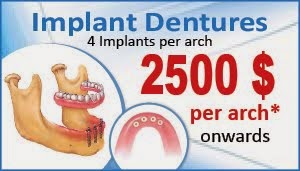Dentists use dental X rays quite extensively to safeguard oral health of patients and to diagnose and cure teeth and jaw problems before they cause irreversible damage. In adults, dental X rays help dentists in:
* Identifying tooth decays, such as tiny pits of decay occurring between teeth, which are not evident in visual examination.
* Locating cracks in existing fillings and decays developing under them.
* Identifying bone loss resulting from the periodontal (gum) disease.
* Revealing infection in root canal or nerve death.
* Preparing for and conducting tooth implants. Dental X rays also aid dentists in undertaking orthodontic treatments.
* Revealing cysts and cancer in gums.
* Identifying changes related to metabolic and systemic diseases.
In children, dental x rays can be used to monitor teeth development and detect possible decays. Dental X-rays can also be used to gauge whether kids are losing their primary teeth on time, and to track the proper development of permanent teeth and detect extra teeth, if any.
Types of Dental X Rays
Dental X rays help in early identification and cure of dental problems. Dentists usually use two types of dental X-rays:
* Intra-oral X rays: This technique involves placing an x ray film inside the mouth to get a detailed picture of patients' oral health. These x-rays can help dentists locate caries, verify teeth development, and check problems in tooth root and bone encircling the teeth, and monitor oral health.
* Extra-oral X-rays: In this technique, the film is kept outside the mouth, with the focal area being the jaw and the skull. This type of dental x ray helps monitor the development of jaws in relation to the teeth.
New Technology in Dental X Rays
The latest dental X ray technique involves the direct transmission of X ray images to a computer. These images can be stored and printed, or viewed on a screen. This technique, called digital imaging, requires lesser exposure to radiation, and enables dentists to:
* Enhance and enlarge the image on a computer screen.
* Send the images to another dentist or specialist electronically.
* Compare current and previous images in a process called subtraction radiography.
To search for local dentists providing the latest dental X rays techniques, look up the one stop directory, Patient FYI. The website's exhaustive information makes the process of selecting a dentist and scheduling an appointment with them extremely simple.
Article Source: http://EzineArticles.com/2477486











0 comments:
Post a Comment